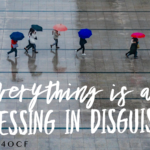For years in education, we’ve described students using a deficit based approach. I think back to my classroom days, and each year, my class list would include the number of “special education students” and “basic skills students.” This approach still exists in many schools and districts. We categorize most students by their deficits and what’s wrong rather than their strengths, knowledge, abilities and capacities.
It is a problem. As a teacher, I distinctly remember meeting with the prior grade level teachers of my incoming students. My colleagues would quickly share a list of the “problem” kids and tell me all about student deficits. I hated those meetings. Before even having an understanding of a strength-based approach, I knew I wanted to make a decision about these students when I met them. I didn’t want a preconceived notion from someone else about a student. I didn’t want or need anyone else’s opinion on how well they thought I was going to get along with a student. I wanted to make up my mind for myself.
While this was a problem for me when I was in the classroom, it is still a problem that exists today. Understanding and recognizing our approach can help us to recognize the abilities in our students.
Start by asking a simple question today.
What gifts are our students bringing to the table?
Rich




